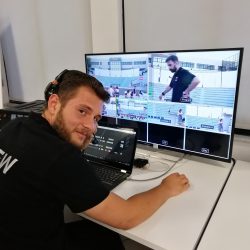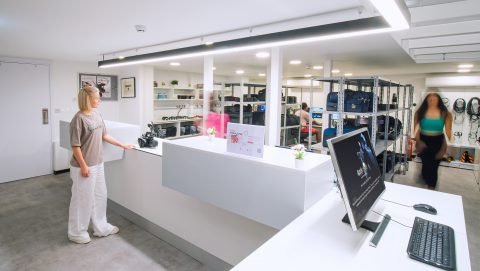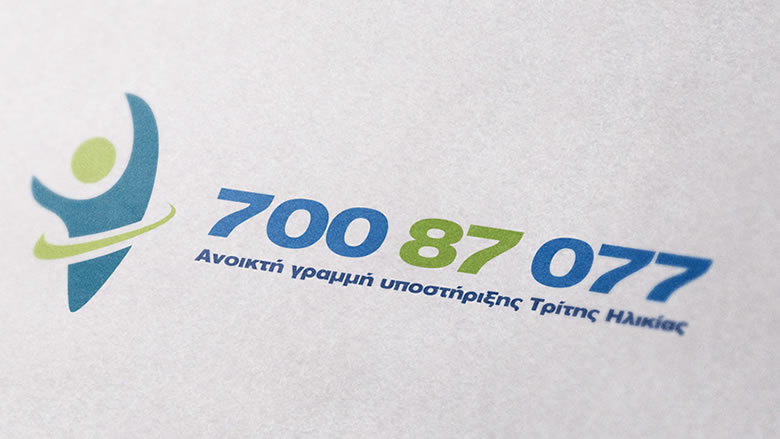MEDIAZONE WORKSHOPS 2025
Intro to podcasting
Intro to video podcasting
Intro to video editing
Target: 18-year-old high school students
Format: 1.5 hr Theory + 2 hr Practical
Focus: Adobe Premiere Pro (desktop) with brief mobile mention
Exercise: Edit a short video using provided footage and music
Intro to Video editing and music creation using AI tools
Audience: 18-year-old high school students
Total Duration: 3.5 hours (1.5 hr Theory + 2 hr Practical)
Tools: Adobe Premiere Pro, Soundraw, Topaz Video AI, Adobe Podcast, ChatGPT or similar AI engines
Foley workshop
Day in the life of a social media manager
Mobile phone movie making
Total Duration: 3.5 hours
- Theory: 1.5 hours
- Practical: 2 hours
Target Group: 18-year-old high school students
Goal: To introduce students to the fundamentals of mobile filmmaking and empower them to plan, shoot, and edit short films using their phones.
Introduction to becoming a Youtuber
Green screen special effects (indoor / outdoor)
Duration:
3 hours (including short breaks)
Target Audience:
Upper-year high school students (ages 16–18)
No advanced prior experience required — basic camera and editing familiarity recommended.
Workshops
-
Intro to podcasting
-
Intro to video podcasting
-
Intro to video editing
-
Intro to Video editing and music creation using AI tools
-
Foley workshop
-
Day in the life of a social media manager
-
Mobile phone movie making
-
**Introduction to becoming a Youtuber
-
**Green screen special effects (indoor / outdoor)
Intro to Podcasting
Intro to Video Podcasting
Intro to Video Editing

Theory Workshop
Icebreaker & Inspiration
► Quick intro poll: “Have you ever edited video before?”
►Show a short 30–60 sec edited video (fun, creative, professional)
►Ask: What makes this video engaging?
What is Video Editing?
► Role of editing in storytelling and communication
► Different types of edits: linear, montage, narrative
► Real-world examples (YouTube, music videos, short films)
Editing Basics
► Core Concepts:
- Cut, trim, split, ripple delete
- Transitions and timing
- Syncing with music, pacing
► Brief Mobile Mention (5 mins):
- Quick look at CapCut or InShot
- Ideal for social media / quick edits
Intro to Adobe Premiere Pro
► Overview of the interface:
- Project panel, timeline, preview monitor
- Tools: Razor, Selection, Move, Ripple Edit
► Demo:
- Importing footage and music
- Assembling clips on the timeline
- Adding basic transitions and titles
- Export settings (MP4, H.264, resolution basics)
Workflow Recap + Tips
► Typical workflow: Import > Edit > Review > Export
► Organizing assets in bins
► Shortcuts that help beginners
► Save often & keep backup copies
Practical Session
Setup
► Open Premiere
► Instructor ensures all students have:
- The provided video clip(s)
- Music track
- Title/logo graphic (optional)
Step-by-Step Guided Edit
► Students follow along:
- Import media
- Place video/audio on timeline
- Cut and arrange clips
- Add transitions and basic effects
- Add music and adjust levels
- Insert opening/closing title
Independent Editing Task
► Goal: Create a 30–60 sec video
- Use at least 3 cuts
- Add music and adjust audio levels
- Include one title screen
- Export in H.264 (MP4)
Peer Review & Showcase
► Students share their edits (voluntary)
► Positive feedback round
► Highlight creative use of cuts, music sync, transitions
Wrap-Up
► Recap key editing concepts
► Share free learning resources (YouTube channels, Adobe tutorials)
► Q&A / feedback on session
► Optional challenge: Finish a short 1-min project at home
Intro to Video editing and music creation using AI tools
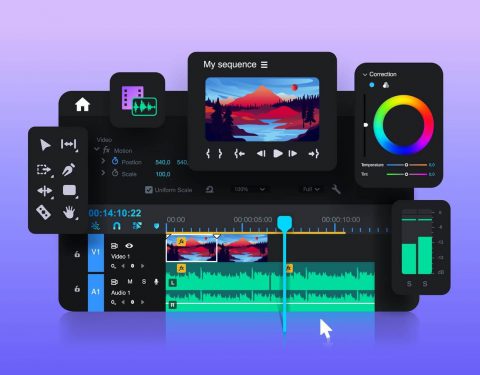
Intro to Video Editing & Music Creation Using AI Tools is a 3.5-hour workshop designed for high school students to explore how traditional editing and AI technologies combine to create engaging media. The first half introduces core editing principles in Adobe Premiere Pro, covering timelines, trimming, transitions, and syncing audio. Students then learn how AI tools enhance creativity: Topaz Video AI for upscaling and slow motion, Soundraw for AI-generated music, Adobe Podcast for cleaning or narrating voice recordings, and ChatGPT for brainstorming, scriptwriting, and idea generation. The second half is a practical session where students edit a 30–60 second video using provided clips. They will trim and enhance footage, add AI-generated music, clean or record narration, and sync all elements into a polished short project. The workshop concludes with sharing, feedback, and resources, helping students discover new creative possibilities at the intersection of video editing and AI.
Theory Workshop
Welcome & Overview
► Quick intro to AI in creative media
► Session goals: Video + AI-enhanced audio + AI-created music
► Icebreaker: Guess which video used AI tools!
Fundamentals of Video Editing
► Timeline, trimming, transitions, sound sync
► Key Adobe Premiere Pro tools
► Role of visuals vs. audio in storytelling
Enhancing Video with Topaz AI
► What is Topaz Video AI?
► Use cases: Upscaling, frame interpolation, slow motion
► Before/after example demo
AI Music Creation with Soundraw
► How AI composes music
► Demo: Create music for a short clip
► Matching genre and emotion to visuals
Voice, Sound & Adobe Podcast AI
► Adobe Podcast Enhance: Fix poor voice recordings
► Voice cloning and narration (ethical talk)
► Sample demo: Clean audio vs. raw recording
Using AI Chat Engines in Media
► How ChatGPT helps: brainstorming, scriptwriting, shot lists
► Demo: Prompt ChatGPT to generate a video idea or scene description
► Students ask ChatGPT for video title ideas live
Practical Session
Task Setup
► Each student (or small group) gets a short raw clip
► Goal: Create a short 30–60s edited piece with music and clean audio
Edit Video in Premiere Pro
► Trim, reorder, and enhance video
► Add transitions, color correction
► Use Topaz AI if possible (guided example)
Add Music from Soundraw
► Generate custom track to match mood
► Import into Premiere, sync to visuals
► Adjust levels, fade in/out
Enhance or Add Voice in Adobe Podcast
► Record or import voiceover
► Use Adobe Podcast to clean and enhance
► Sync narration with key visuals
Export & Share
► Export final edit
► Optional: Present or screen a few edits
► Quick feedback and celebration
Foley Workshop
Day in the life of a Social Media Manager
Theory Workshop
Welcome & Icebreaker
► Quick poll: Favorite social media platform & why.
► What do you think a Social Media Manager does?
Role Breakdown
► Social Media Manager: Planning, scheduling, strategy.
► Copywriter: Writing captions, CTAs, hashtags.
► Content Creator: Photos, videos, reels, stories, memes.
► Daily tasks and tools used (Trello, Canva, Meta Suite, ChatGPT, etc.).
Skills & Tools Overview
► Communication, creativity, time management.
► Using AI & design tools (e.g., Canva, ChatGPT, CapCut).
► Analytics basics: reach, engagement, insights.
The Content Calendar
► How to plan weekly content.
► Posting frequency and timing.
► Understanding different content formats: reels, stories, carousels, etc.
Case Study & Q&A
► Real-world example: “A day in the life” of an actual brand or influencer.
► Open Q&A.
Practical Session
Team Briefing & Task Setup
► Students split into small teams (3–4 per team).
► Scenario: You are the Social Media Manager for a new eco-friendly café.
► Each team will:
- Create a 1-day content plan (3 posts).
- Write captions.
- Design 1–2 posts (image or short video).
- Present to the group.
Hands-On Creation
► Use Canva (desktop/mobile) for visuals.
► Use ChatGPT or similar for caption generation and hashtag ideas.
► Instructor circulates for guidance & feedback.
Team Presentations & Peer Feedback
► Each group presents their content plan.
►Class gives light feedback: What works? What could be improved?
Outcomes
By the end of the session, students will:
► Understand the multitasking role of a social media professional.
► Learn to use basic tools for writing, planning, and designing.
► Experience teamwork under creative pressure.
► Present ideas clearly and receive feedback.
Mobile Phone Movie Making
Total Duration: 3.5 hours
Theory: 1.5 hours
Practical: 2 hours Target Group: 18-year-old high school students Goal: To introduce students to the fundamentals of mobile filmmaking and empower them to plan, shoot, and edit short films using their phones
Theory Workshop
Introduction to Mobile Filmmaking
► What is mobile filmmaking?
► Why mobile? Advantages and limitations
► Examples of successful mobile-made films
The Basics of Visual Storytelling
► The 3-act structure (Beginning, Middle, End)
► Storyboarding & shot planning
► Keeping it short and engaging
Cinematography with a Phone
► Framing & composition
► Lighting tips (natural light, practical lights)
► Camera movements (handheld, tripod, stabilizers)
► Orientation: landscape vs portrait
Audio & Sound
► Importance of clear audio
► Using external mics or quiet environments
► Creative use of sound design/music
Editing on Mobile
► Recommended apps (CapCut, VN, iMovie, InShot, etc.)
► Basic cuts, trimming, adding music & titles
► Color correction basics
Tips for Better Production
► Shooting vertically vs. horizontally
► Keep it steady!
► Clean your lens
► Short and sweet: planning for 1–2 min films
Practical Session
Group Activity Briefing
► Break into small groups (2–4 students)
► Choose a theme or prompt (e.g., “A secret”, “One minute mystery”, “Lost & found”)
Planning
► Brainstorm story
► Create quick shot list or storyboard
►Assign roles (camera, actor, director, editor)
Shooting
► Students film scenes using their mobile phones
►Encourage experimentation and multiple takes
Editing
► Edit directly on mobile apps
► Add music (royalty-free), basic effects, titles
Showcase & Feedback
► Each group presents their film (1–2 mins)
► Quick positive feedback from instructor & peers
Materials Needed:
► Students’ mobile phones (with camera and editing app installed)
► Headphones or small Bluetooth speakers (for sound checking)
► Optional: phone tripods, gimbals, external mics
► Printed mini storyboard templates (optional)
Introduction to becoming a YouTuber
Green Screen Special Effects (Indoor/Outdoor)
Target Audience: Upper-year high school students (ages 16–18) No advanced prior experience required — basic camera and editing familiarity recommended.
Workshop Objectives:
By the end of this workshop, students will:
► Understand how green screen (chroma key) technology works.
► Learn how to light a green screen properly both indoors and outdoors.
► Shoot footage for green screen use.
► Key out the green screen in editing software.
► Combine foreground and background footage for visual storytelling.
THEORY (Presentation + Demos)
The Magic of Green Screen: How It Works
What is Green Screen (Chroma Key)?
► Definition & brief history (news, movies, YouTube)
► Why green? (and when to use blue)
Indoor vs Outdoor Use:
► Lighting challenges & solutions
► Wind, wrinkles, and natural light interference
Key Equipment Overview:
► Green screen (cloth, paper, pop-up)
► Lighting (3-point lighting for indoor; sunlight control for outdoor)
► Camera settings: resolution, depth of field, ISO
Visual Examples & Demos:
► Good vs bad keying results
► Case study: VFX breakdowns (short YouTube examples)
► Live demo: Chromakey in Premiere Pro or CapCut
PRACTICAL SHOOTING (Split into Groups)
Lights, Camera… Green Screen!
Shoot short clips with green screen
► Form groups of 3–4 students
► Set up 2 stations:
- Indoor Green Screen Setup (controlled lighting)
- Outdoor Green Screen Setup (diffused sunlight or shade)
Each group will:
► Write a 15–20 second scene (news report, fantasy scene, teleport, etc.)
► Assign roles: actor, director, camera, lighting
► Shoot 2 versions: one indoor, one outdoor
Materials Needed:
► 2 green screens (or 1 portable)
► 2–4 cameras or smartphones with tripods
► Lighting kits or reflectors
► Props or costume pieces (optional)
POST & PRESENTATION (Editing + Review)
Making the Magic Real: Editing Green Screen
Edit your green screen footage
► Use accessible software (e.g., Adobe Premiere Pro, CapCut, or iMovie)
► Import clips and backgrounds
► Apply chroma key, adjust edges, color correct
► Add background video/images (sci-fi scene, newsroom, outer space, etc.)
Showcase & Feedback
► Each group presents 1 finished clip (1–2 mins max)
► Quick peer feedback: What worked well? What could be improved?
Required Materials & Setup:
► 1-2 Green screen backdrops (portable or stand-mounted cloths)
► 3-5 Cameras / smartphones (with tripods or stabilizers)
► 2+ Lighting kits (Indoor: LED panels / Outdoor: reflectors or softboxes)
► 4+ Computers or tablets (with editing software installed)
► Background images/videos (pre-loaded on devices or USBs)
► 4-5 Headphones (optional for editing)
► Props/costumes (0ptional for fun engagement)
Optional Extension Resources: Adobe Premiere Pro Tutorial – Chroma Key
► Free background footage (Pexels, Pixabay, Videvo)
► YouTube Creators Academy – Visual Effects Tips
Marios Piperides

Elina
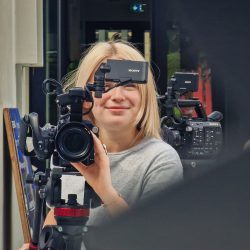
Kyriakos Kiteou
